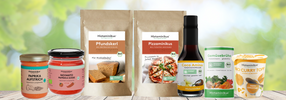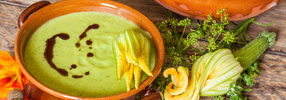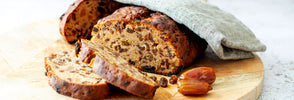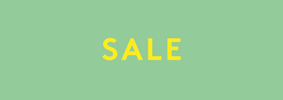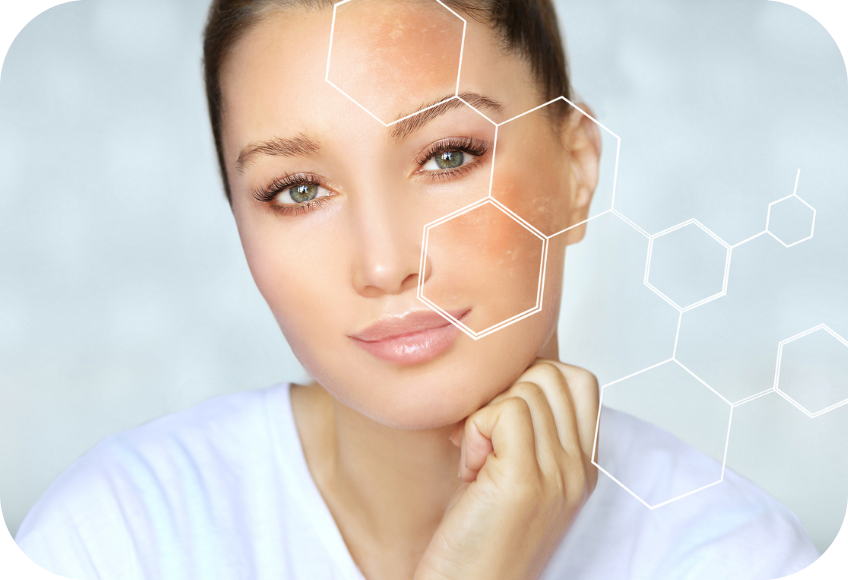
Neurodermatitis
Neurodermatitis - also known as atopic eczema - is a chronic, inflammatory skin disease, which is particularly noticeable through strong itching, dry skin and scaly areas. It often occurs in infant and childhood, but can also affect adults. Around 10 to 15 percent of children live in Germany and about two to four percent of adults with this disease.
Symptoms: How do you recognize neurodermatitis?
The main symptoms of neurodermatitis are dry, irritated and flaky skin. Neurodermatitis often runs in batches. This means that sometimes the symptoms are stronger, sometimes they let go, and there are also phases in which the skin is completely symptom -free. Only in rare cases does the skin remain inflamed permanently.
In babies, neurodermatitis mostly shows up on the cheeks and on the outside of the arms and legs. Occasionally, the back, the stomach and chest can be affected. When children, adolescents or adults suffer from neurodermatitis, the back of the back of the knees, elbows and the neck are often the main areas for the rash. Lace surfaces and soles of the feet can also be itchy and ignite. In contrast, the rash rarely occurs on the face.
The itching is particularly stressful, which often becomes unbearable and worsens at night. The constant scratching further irritates the skin, which can lead to open wounds, infections and thickening of the skin. Pull -ups, in which the symptoms suddenly get worse, alternate with calmer phases.
Share information about your brand with your Customers. Describe a product, make announcements, or welcome customers to your store.
Causes
The top layer of skin, also called epidermis, consists of three layers: the basal layer, the spiked cell layer and the horny layer. The horny layer is the visible part of the skin and has the important task of protecting your body from pathogens. It is constantly renewing itself by growing new cells from the lower layer of basal. With neurodermatitis, however, this protective barrier does not work properly. The horn layer is damaged by inflammatory processes in the skin. This makes it easier to penetrate irritants, allergens and germs into the skin. In addition to these inflammatory reactions, an imbalance in the skin flora and genetic factors also play a role. A particularly important gene is the so-called FLG gene. It controls the production of Filaggrin, a protein that is important in the formation of the epidermis. If Filaggrin is missing, the skin becomes drier, loses moisture and its protective fats change.
About 30 to 40 percent of people with neurodermatitis have an allergic form of the disease. With these, the immune system reacts to allergens and forms antibodies that trigger inflammation in the skin. This allergic reaction can also be reinforced by certain foods such as milk, eggs or nuts.
Further trigger can be:
💥 Psychological factors (stress, conflicts, boredom)
💥 Environmental factors (pollen, house dust, chemicals)
💥 Diet (certain foods, additives)
💥 Climate factors (overcepted air, cold, sultry),
💥 Mechanical skin irritation (scratch, too tight, rubbing clothes)
💥 Animal hair (cat, guinea pig, hamster, horse) and feathers
💥 Infections
Share information about your brand with your Customers. Describe a product, make announcements, or welcome customers to your store.
Effects on body and mind
Neurodermatitis not only affects the skin. Many affected people report psychosocial stress such as sleep disorders, concentration problems and feelings of shame, especially for visible eczema on the face or on the hands. The itching and pain can have a negative impact on the quality of life. In the long term, people with neurodermatitis can have a thickening of the skin (so -called lichenification) and increased susceptibility to infection. Bacteria, viruses and mushrooms are easier to settle on the irritated skin.
Neurodermatitis can be particularly stressful for children, and there are days when everyday life is difficult to cope with for child and parents. But on phases with severe complaints, quieter times usually follow. Neurodermatitis often improves in the course of childhood or even completely disappears. But the concern for the child, elaborate skin care, frequent visits to the doctor and sleepless nights can put a lot of strain on parents and children in acute phases. To alleviate this load, there are special neurodermatitis training. There you will receive valuable information about treatment, to avoid irritants and tips for everyday life. Many health insurance companies cover the costs for these six weekly training courses. In severe cases, outpatient or inpatient rehabilitation can also be useful.
Share information about your brand with your Customers. Describe a product, make announcements, or welcome customers to your store.
Diagnosis and treatment
To determine whether it is neurodermatitis, your doctor examines the skin thoroughly. The diagnosis is made when there is a very itchy rash at typical parts of the body for several months or recurred. At the same time, the doctor excludes other possible causes such as psoriasis. Especially in infants, neurodermatitis can sometimes be confused with seborrheic dermatitis. With this skin inflammation, however, the skin hardly itches and usually heals within weeks or months.
The treatment of neurodermatitis aims to strengthen the skin barrier and relieve itching. Comprehensive skin care is the be -all and end -all moisturizing creams and ointments that are rich in fat help to keep the skin supple. There are different products that can be used depending on the skin condition:
💦 Ointments are particularly high in fat and suitable for dry skin areas.
💦 Creams have a higher water content and move in faster.
💦 Lotions contain even more water, which can be helpful in the case of oozing areas.
In addition, medication such as cortisone-containing creams or so-called calcineurin inhibitors (e.g. tacrolimus) can help reduce inflammation and treat relapses. If the skin is severely inflamed, systemic therapies such as immunosuppressants can also be used. Of course, even with externally used products, it is always important to avoid unnecessary additives if possible and to use mostly natural products.
Share information about your brand with your Customers. Describe a product, make announcements, or welcome customers to your store.
The role of climate in neurodermatitis
In winter, the symptoms of neurodermatitis are often particularly bad. The dry air increases the skin and worsens the symptoms. In summer, on the other hand, the skin can usually recover well, because the higher humidity supports healing and neurodermatitis can almost disappear.
In Austria, the eastern bank of Lake Neusiedler is a real insider tip. Here you get the perfect combination of the Pannonian climate with lots of sun and the pleasant humidity of the lake. It is of course even better on the Mediterranean coast - the warmth and moisture there also have a positive effect on your skin. Prof. Bergstresses from Dallas once said that there is no neurodermatitis in Florida. Dermatologists confirm this. The situation is similar in southern Europe - in coastal areas, the frequency of neurodermatitis is only 0–1 %, while 24 % of people are affected in Scandinavia. Sun and humidity play a key role in healing. The Dead Sea is also known for its positive influence on neurodermatitis. Here it is above all the UVA rays in the atmosphere that help-less the salinity of the water. Sun and wet air are real allies when it comes to relieving neurodermatitis.
Share information about your brand with your Customers. Describe a product, make announcements, or welcome customers to your store.
Image with text
ADVERTISING
Effective histamine management
Histabalance® Basics combines important vitamins, antioxidants and mineralsthat the body needs with a low -histamine diet.
The Basics Formula with Calcium, vitamin C, magnesium, quercetin and copper is an important building block with a low -histamine diet.
Histabalance® Basics supports you and contributes to it through the included copper, which To protect cells from oxidative stress.
to the product
Neurodermatitis and histamine intolerance
With neurodermatitis, your body may release more histamine that can increase your symptoms. About 25 % of those affected also have histamine intolerance. Histamine plays an important role in inflammation and weakens your skin barrier because it disturbs the development of the horn cells (keratinocytes). This loses your skin from protection and the symptoms can worsen. A low -histamine diet and antihistamines can help you reduce the strain from histamine and give your skin the chance to regenerate better.
Share information about your brand with your Customers. Describe A Product, Make Announcements, Or Welcome Customers to your Store.
Nutrition and lifestyle in neurodermatitis
Many people with neurodermatitis try to relieve the symptoms through a special diet. However, the absence of certain foods only makes sense if there is actually a proven allergy. Common allergens are cow's milk, eggs, nuts and fish. However, it is important that you continue to consume all important nutrients, vitamins and minerals in an exhaust diet. A balanced diet should be taken into account in particular in children to avoid deficiency symptoms. Even with a already restricted diet by histamine intolerance, you should discuss a possible exhaust diet in advance with your doctor or therapist in order to avoid malnutrition. Studies have shown that diets without a clear diagnosis rarely help in the long term. An allergy test (e.g. the prick test or a blood test on IGE antibodies) can clarify whether certain food should be avoided.
In addition to the right care and a balanced diet, there are other aspects of lifestyle that can help prevent or relieve neurodermatitis.
1. Stress reduction: Stress is a common trigger for neurodermatitis spurts. Relaxation methods such as yoga, meditation or autogenic training and breathing exercises can help reduce stress and thus relieve the symptoms.
2. Clothing: Apply soft, breathable fabrics such as cotton and avoid wool or synthetic materials that can irritate the skin. The clothes should also sit loosely to avoid friction.
3. Moisture: Pay attention to the right humidity in your home. Dry heating air can dry out the skin, especially in winter. A humidifier can help here.
4. Regular bathrooms: Short, lukewarm bathrooms with special dashing additives can calm the skin. However, avoid too hot water or long bathing times, as this further dries out the skin.
👉🏼 Alternative approaches
In addition to classic conventional medicine, there are also some alternative approaches that can help with neurodermatitis. Popular home remedies are, for example, baths with totem sea salt that calm the skin. Aloe Vera is also often used because of its anti -inflammatory effect. Some affected report positive experiences with probiotics because they support the balance of the intestinal flora, which in turn can have an impact on the immune system and your histamine intolerance. Acupuncture and homeopathy are often used for supplementary treatment, even if the scientific evidence is often weaker here.
Share information about your brand with your Customers. Describe A Product, Make Announcements, Or Welcome Customers to your Store.
Collapsible content
SOURCES
- Book "Histamine intolerance" by Prof. Reinhardt Jarisch
- https://www.gesundheitsinformation.de/neurodermitis-atopisches-ekzem.html
- https://kiweno.com/de/h/histaminintoleranz-hautprobleme/
- https://www.ndr.de/ratgeber/gesundheit/Neurodermitis-erkennen-und-behandeln,neurodermitis106.html
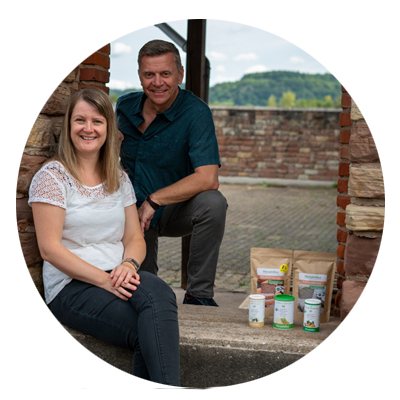
From those affected for those affected
We are Thomas and Michaela Zinser, founder of Histaminikus.
Because of the own histamine intolerance of Michaela and our son, we founded Histaminikus. The frustration does not find any suitable histamine food has spurred us to develop low -histamine food.
We would like to give you back a piece of quality of life. Feel free to look around with us.
Kind regards
Thomas and Michaela

